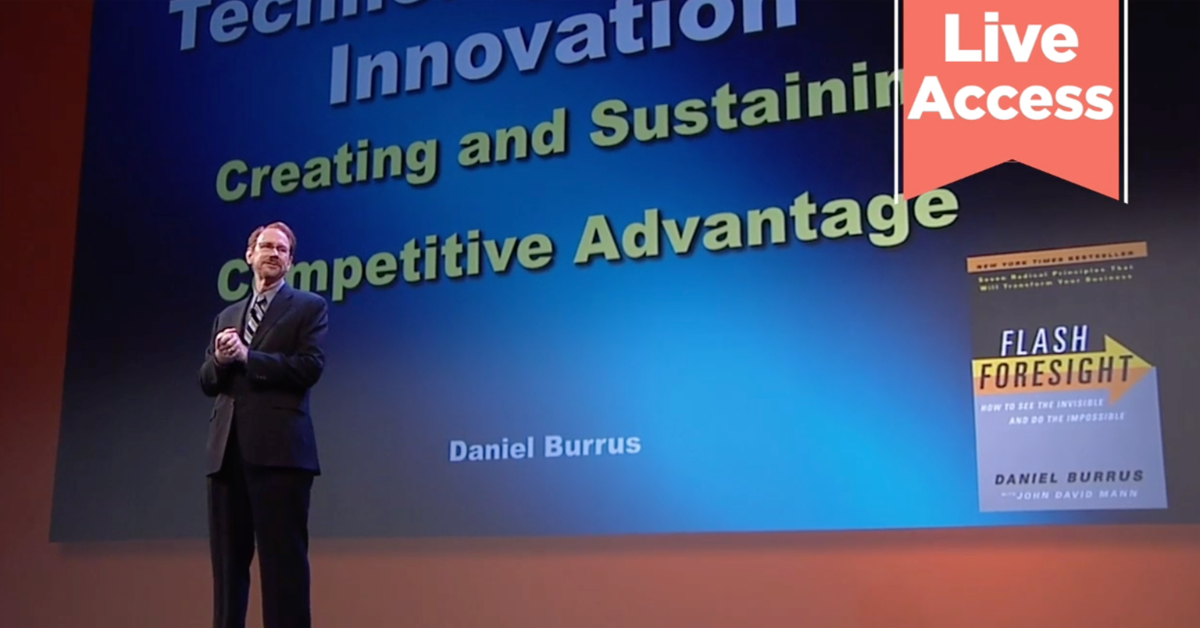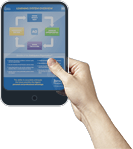The contemporary business landscape of today is quite demanding. And now with AI applications creating disruption and change, human creativity is not just “nice-to-have”. It is the defining factor that separates thriving companies from those struggling to adapt!
As Artificial Intelligence (AI) reshapes industries all over, human creativity now emerges as an absolutely critical skill allowing organizations to adapt and leverage new technology effectively in their respective industry. But what does creativity in business really mean in the age of AI? And why is it so vital to innovation and growth?
Let’s explore how companies in 2024 have creatively navigated the drastic AI-driven transformations that transpired, how they turned potential disruptions into opportunities, and why fostering a culture of creativity is essential for long-term success in the year to come.
What is Creativity in Business?

Creativity in business refers to the ability of individuals and organizations to generate novel and valuable ideas, strategies, and solutions that lead to innovation and problem-solving. In this AI-centric era, creativity often involves using technology to enhance or rethink existing processes rather than replacing human ingenuity.
By fostering creativity, businesses can unlock new opportunities that drive competitive advantage and meaningful differentiation, while also enhancing their business acumen.
Why is Creativity Important to Business in the Age of AI?
AI is accelerating the pace of change and automating routine tasks, which means the importance of creativity in business is now more pronounced and vital than ever before. While AI can streamline certain processes, identify patterns, and optimize operations, it lacks the intrinsic human capacity for creativity, empathy, and insight that drives visionary business strategies.
In this context, making creativity crucial for business strategies ensures that companies can navigate the complexities of the modern business environment. Here’s why this matters:
- Adaptability: In a rapidly shifting environment, creative thinking enables businesses to adapt quickly and effectively.
- Competitive Edge: AI is widely available, but how companies creatively apply it determines their uniqueness.
- Innovation Acceleration: Combining AI with human creativity leads to innovations that improve products, services, and customer experiences.
Benefits of Fostering Business Creativity

Fostering business creativity can have numerous benefits for organizations. By encouraging creative thinking and innovative solutions, businesses can gain a competitive edge in the market. Creative thinkers bring unique ideas and perspectives to the table, leading to new products, services, and processes that drive business growth.
Moreover, fostering creativity can also lead to increased employee engagement and motivation, as employees are given the freedom to think outside the box and explore new ideas. This can result in improved job satisfaction, reduced turnover rates, and increased productivity.
In addition, business creativity enhances problem-solving skills. By encouraging employees to think creatively, businesses can develop innovative solutions to complex problems. This can lead to cost savings, improved efficiency, and enhanced customer satisfaction. Fostering creativity also leads to increased innovation, which drives business growth and expansion.
In a world where AI is automating routine tasks, the human touch of creativity becomes even more crucial, making creativity a key driver of business success.
How Did Companies in 2024 Use Creativity to Drive AI Adoption?
 To stay ahead and adopt an Anticipatory approach, companies are leveraging creativity to innovate AI applications, prioritizing value creation and enriching the human experience. Here are some recent examples from this past year:
To stay ahead and adopt an Anticipatory approach, companies are leveraging creativity to innovate AI applications, prioritizing value creation and enriching the human experience. Here are some recent examples from this past year:
- Tesla’s Personalized Driver Experience
Tesla has taken creative steps to make driving more personalized through AI. Their vehicles now incorporate AI-driven customization features that adapt based on a driver’s habits, routes, and preferred in-car settings. By enhancing each drive uniquely, Tesla merges AI capabilities with creative thinking to offer a more engaging customer experience.
- Coca-Cola’s AI-Powered Content Creation
Coca-Cola has embraced AI to aid its creativity and marketing initiatives. The brand uses generative AI tools to develop personalized marketing campaigns and product designs that resonate with regional preferences. This creative use of AI for content generation enables Coca-Cola to remain fresh and relevant, aligning closely with customer expectations.
Why Creativity is Critical for Marketing and Product Development
In 2024, the role of creativity in marketing is evolving as AI becomes increasingly integrated. Creative teams now use AI tools to develop targeted advertising, but the best results come from a strategic blend of AI analytics with human creativity. Here’s how creativity fuels marketing innovation:
- Personalization at Scale: Brands can use AI data to understand customer behaviors, but creative marketing is what converts this data into compelling stories and messages that resonate.
- Experimentation and Feedback Loops: AI can test and provide feedback on marketing strategies quickly, but creativity is essential to interpret these insights and iterate on ideas that may not have worked.
- Brand Storytelling: Creativity ensures that brand messaging remains authentic, relatable, and resonant, something AI alone cannot achieve.
How Do Organizations Foster Creativity and the Creative Process in an AI-Driven World?

The value of creativity in an organization becomes clear when we look at how businesses cultivate it. Here are some strategies to build a culture where creativity thrives alongside AI:
- Encourage Experimentation: Companies like Google foster creativity by allowing employees time to pursue projects beyond their main role. This encourages fresh ideas, which can later integrate with AI initiatives.
- Promote Cross-Functional Collaboration: Creativity often flourishes when diverse minds come together. Mixing data scientists with marketers, for instance, can yield creative ways to apply AI to consumer-facing applications.
- Invest in Learning: With AI’s rapid advancement, ongoing education helps employees think creatively about technology, fostering a more adaptable and innovative workforce.
Overcoming Barriers to Innovation

Despite the importance of creativity and innovation in business, there are often barriers that prevent businesses from embracing these concepts. One of the main barriers is the fear of failure.
Many businesses are risk-averse and fear that investing in creativity will lead to failure. However, this fear can be overcome by creating a culture that encourages experimentation and learning from failure.
Another barrier is the lack of resources. Many businesses may not have the budget or resources to invest in creative initiatives. However, this can be overcome by leveraging existing resources and finding creative ways to allocate budget. For example, businesses can use design thinking principles to foster innovation in ways that are low-cost and high-impact.
By fostering a culture that values creative problem solving and innovative ideas, businesses can overcome these barriers and unlock new opportunities for growth.
Creative Thinking and Innovation: How AI is Shaping the Future of Work

As AI continues to evolve, the importance of creative thinking in business grows. Companies can’t rely solely on AI for success; they need creative thinkers who can guide AI applications toward meaningful goals. This blend of creativity and innovation at work ensures that AI solutions serve rather than replace human insights.
- Adaptable Job Roles: AI is transforming many roles, but creativity allows employees to adapt, redefining their contributions.
- Focus on Human Skills: Soft skills like critical thinking, emotional intelligence, and problem-solving become even more valuable in an AI-driven world.
- Higher-Value Tasks: By automating routine tasks, AI frees employees to focus on creative, high-value activities that drive business growth.
Learning from Creative Business Leaders

There are many creative business leaders who have successfully leveraged creativity and innovation to drive business growth. One classic example I personally enjoy is Steve Jobs. Jobs co-founded Apple and revolutionized the technology industry with innovative products such as the iPhone and iPad. Jobs was known for his creative thinking and ability to merge technology and art to create innovative products.
This integration is the perfect example of how technology and human beings are a discussion of Both/And rather than Either/Or. Jobs’s creativity was leveraged in an Anticipatory way, as he knew that technology is used by people and does not exist in a vacuum of sorts.
Another example is Richard Branson, who founded Virgin Group. Branson has launched numerous innovative businesses, including Virgin Airlines and Virgin Mobile. Branson is known for his creative thinking and ability to take risks, which has led to the development of groundbreaking innovations that have disrupted whole industries over time.
These leaders exemplify how creative thinking and innovation can lead to significant business significance, positive disruption, and industry transformation.
Creativity in Business: Turning Disruptions into a Competitive Edge
In an era of unprecedented technological change, creative leaders see disruption as an opportunity rather than a threat. As I frequently discuss in my book The Anticipatory Organization, the ability to identify Hard Trends—those disruptions we know are coming—and Soft Trends—those that may be influenced—gives companies an advantage to proactively shape the future.
The following steps can help organizations anticipate and embrace AI-driven disruptions creatively at your organization:
- Always Identify Hard Trends: These are predictable changes, like the growth of AI in customer service, that companies can leverage with creative strategies.
- Engage in Pre-Solving Problems: Creative leaders can “pre-solve” potential challenges by developing solutions ahead of time, using AI to enhance these solutions.
- Stay Agile but Anticipatory: While agility is crucial, businesses that anticipate change can innovate more effectively, leading instead of merely reacting to disruptions.
The best leaders don’t fear disruption—they anticipate it, harness it, and use it to drive innovation.
Manage Risks and Encourage Creativity

While embracing creativity and innovation can drive business growth, there are also risks involved. One of the main risks is the risk of failure. Investing in creative ideas and innovation can lead to failure, which many business leaders fear will result in financial losses and damage to reputation.
However, this risk can be managed by taking a calculated approach to creativity and innovation. Businesses must also consider managing these risks of embracing creativity by creating a culture that encourages experimentation and learning from failure.
By embracing a growth mindset and viewing failure as an opportunity to learn and improve, you reduce the risks associated with creativity and innovation in the business world.
This approach ensures that creative ideas are nurtured and developed in a way that minimizes risk while maximizing potential for success.
Embracing Creativity in the Business World: The Path Forward for Future-Proof Business
The importance of creativity in business cannot be overstated, especially as AI reshapes industries and roles. Creativity in business isn’t just about novel ideas; it’s about finding human-centered solutions to technological challenges. For companies committed to long-term success, creativity is the key to leveraging AI not as a replacement but as an enabler of human potential.
Let’s embrace creativity to anticipate, adapt, and lead in an AI-driven future! This approach ensures that your organization stays competitive and continues to grow, no matter what technological changes arise. Now is the time to foster a creative culture, leverage the power of AI strategically, and be the disruptor—not the disrupted.
Ready to Future-Proof Your Organization with Creativity and Innovation?
In a rapidly evolving, AI-driven world, creativity isn’t just a differentiator—it’s the key to thriving amid disruption. Daniel Burrus, a globally recognized futurist and strategic advisor, has helped industry leaders anticipate change and turn disruptions into opportunities using his proven methodologies.
If you’re looking to inspire your team to embrace innovation, lead with confidence, and leverage AI alongside human creativity, consider bringing Daniel in as your next keynote speaker. Learn more here: Daniel Burrus – Futurist Keynote Speaker.






